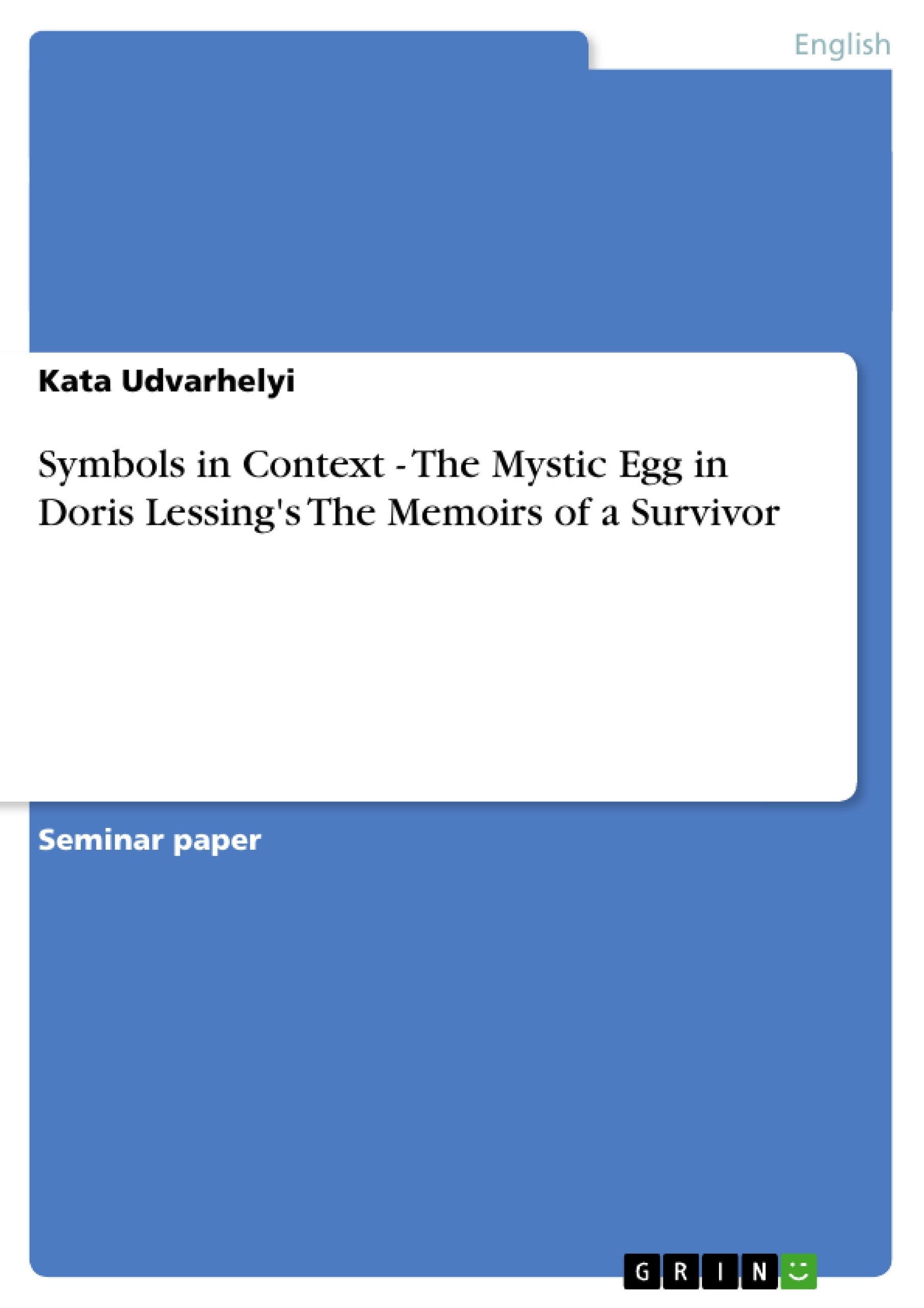There are few contemporary writers, who are inspired by so many different ideologies and diverse disciplines in their lifelong career, as the Novel-Prize winner Doris Lessing. Her works are characterised principally by the philosophy of Sufism, communist ideas and the theories of S. Freud and of C.G. Jung. Her literary works are held in high esteem by young and old, mystics and realists, feminists and anti-feminists and by readers in socialist and capitalist countries alike. She has without doubt an extraordinary personality.
[...]
As Lessing herself confirms, symbols become transmitters of abstractions and may develop into significant stylistic devices. For this reason, the present essay focuses on the appearance, significance and possible meaning of the chief and most complex symbol used in this novel: the mystic egg. As Wilson has also pointed out (vgl. Wilson n.d.:1), only a few scholars have been dealing with this issue before, without being able to define a precise explanation of the symbol. It remains, therefore, a great challenge to analyse it in further detail.
The present essay aims to encompass the challenging and broad field of symbols related to the eggs that emerge in the novel. First, universal signs associated to eggs are going to be presented, in order to provide a general overview of the development of the ancient image in the context of the novel. In the subsequent part, the three major scenes are going to be analysed in detail, where the egg is mentioned: first, related to the other key symbol of the novel, namely to the wall; second, appearing as a white, and finally as a giant black egg. For better understanding of the symbols, they are going to be explained in the context of the novel. The paper ends with a short summary and concluding remarks.
Particular attention is also devoted to the language applied, as the close examination of expressions reveals and becomes the prior transmitter of the meaning of any literature. The utilisation of language and dream helps Lessing’s protagonists (vgl. Saint Andrews 1986: 113) to discover the truth beyond the visible materialisation of sole words and the rational mind.
Inhaltsverzeichnis (Table of Contents)
- I. Introduction
- II. The Mystic Egg
- 1. The Universal Symbol of Egg
- 2. Appearance of the Symbol in the Novel
- 2.1. Egg and Wall
- 2.2. The White Egg
- 2.3. The Black, Iron Egg
- III. Conclusion
Zielsetzung und Themenschwerpunkte (Objectives and Key Themes)
This essay aims to analyze the multifaceted symbol of the egg in Doris Lessing's The Memoirs of a Survivor. It explores the symbol's universal significance and its unique application within the novel's context, examining its relationship to other key symbols like the wall. The analysis considers the egg's representation across various scenes, focusing on its metaphorical and symbolic implications.
- The universal symbolism of the egg across different mythologies and cultures.
- The egg as a private symbol in Lessing's work, carrying unique meaning.
- The relationship between the egg and the wall as key symbols in the novel.
- The different manifestations of the egg (white, black) and their respective symbolic weight.
- The role of language and dream in revealing the meaning behind the symbols.
Zusammenfassung der Kapitel (Chapter Summaries)
I. Introduction: This chapter introduces Doris Lessing's The Memoirs of a Survivor, highlighting its experimental nature and the use of symbols. It focuses on the central role of the mystic egg as a complex and largely unexplored symbol in the novel, setting the stage for a detailed analysis.
II. The Mystic Egg: This section begins by exploring the universal symbolism of the egg across various mythologies and cultures, emphasizing its association with creation, fertility, and wholeness. It then delves into the novel’s specific use of the egg, examining its depiction in three key scenes. The first relates the egg to the wall as a prominent symbol.
Schlüsselwörter (Keywords)
Doris Lessing, The Memoirs of a Survivor, Symbolism, Mystic Egg, Wall, Creation Mythologies, Sufism, Metaphor, Allegory, Unconscious, Private Symbol, Conventional Symbol.
- Quote paper
- B.A. Kata Udvarhelyi (Author), 2008, Symbols in Context - The Mystic Egg in Doris Lessing's The Memoirs of a Survivor, Munich, GRIN Verlag, https://www.grin.com/document/122741



